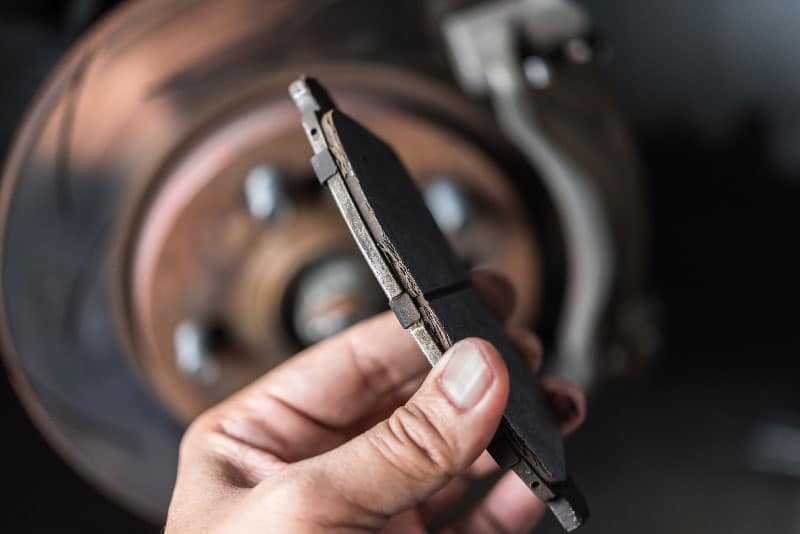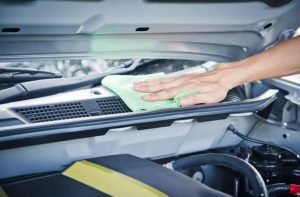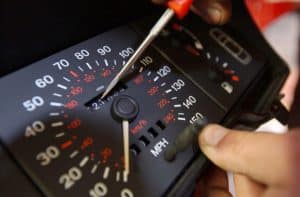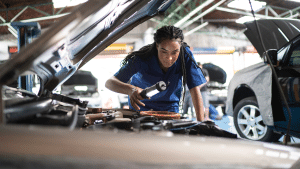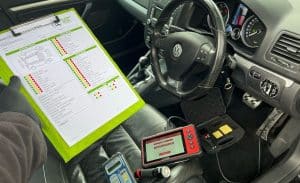There’s no specific schedule for when it’s time to replace your brake pads. That means it’s a good idea to check your brake pads regularly to help determine the amount of wear and tear. Typical brake pad wear depends on how and where you drive, says Cars.com. For example, if you drive in urban areas, your brake pads may wear out faster than they would if you drove on rural roads due to the stopping and starting of city traffic.
Whether you go to a professional mechanic or handle the maintenance yourself, it’s a good idea to check the brake pads each time your tires are rotated — about every six months, says Cars.com. It’s also a good idea to check your car owner’s manual or talk to a professional technician so you understand what service schedule and parts may be right for your particular vehicle.
Fortunately, brake pads are designed to provide clear signals that they need to be checked and possibly replaced. Here are some ways to check your brakes:
1. Listen to the brake pads
If you haven’t replaced your brake pads for some time, you will notice that there is a squealing sound when you apply the brakes. This could be a sign that your brake pads are already worn out, hence they need to be replaced. The noise comes from the backing plate grinding against the rotor instead of the brake pads.
What’s worse is that people around your car can hear the metal grinding sound which can be embarrassing especially if the noise is too loud already. Another sign that your brake pads are already worn out is that you feel a stronger vibration whenever you step on the brake pedal or hold the steering wheel.
2. Inspect the thickness
Brake pads get thinner and thinner the longer they are used. Generally, brake pads are designed with three to four mm of thickness which should last for around three years or more. If your brake pads are less than two mm, then it could be a good sign that you need to replace your brake pads.
You can inspect the thickness without removing the wheels and brake caliper. But we recommend that you remove these components as well whenever you decide to check your brake pads for wear and tear so you can inspect other brake system parts such as the brake caliper seals and brake pins.
3. Age
As said earlier, brake pads tend to last for around 40,000 km to 90,000 km, or around two to five years. If you reach these intervals, then it is the best time to inspect your brake pads for wear and tear. You should also consider the road condition that you are driving on daily to determine your brake pads’ lifespan.
If you drive on a normal road conditions where roads are flat and traffic is rampant, then your brake pads will last for a longer time as high braking power is not necessary to come to a full stop. But if you drive on steep long roads and highways on a daily, then your brake pads should wear faster than they should.
4. Indicator Lights
Some vehicles have an indicator light on the dashboard that will signal when it’s time to replace the brake pads. Check your owner’s manual to see if your vehicle comes equipped with a low-pad warning system. Remember that if the light does come on, you’ll need to have your mechanic replace the warning sensors as well as the brake pads.
If you do not feel comfortable checking your brake pads, take your vehicle to a local dealership or repair shop where a professional can do it for you. Not only will replacing worn brake pads help make your car safer, but it may also help save money in the long run by helping prevent avoidable accidents.
Auto King Mobile Mechanics can come to you for any vehicle repair, service, roadworthy certificate, and inspection needs. Call us for a free quote!
